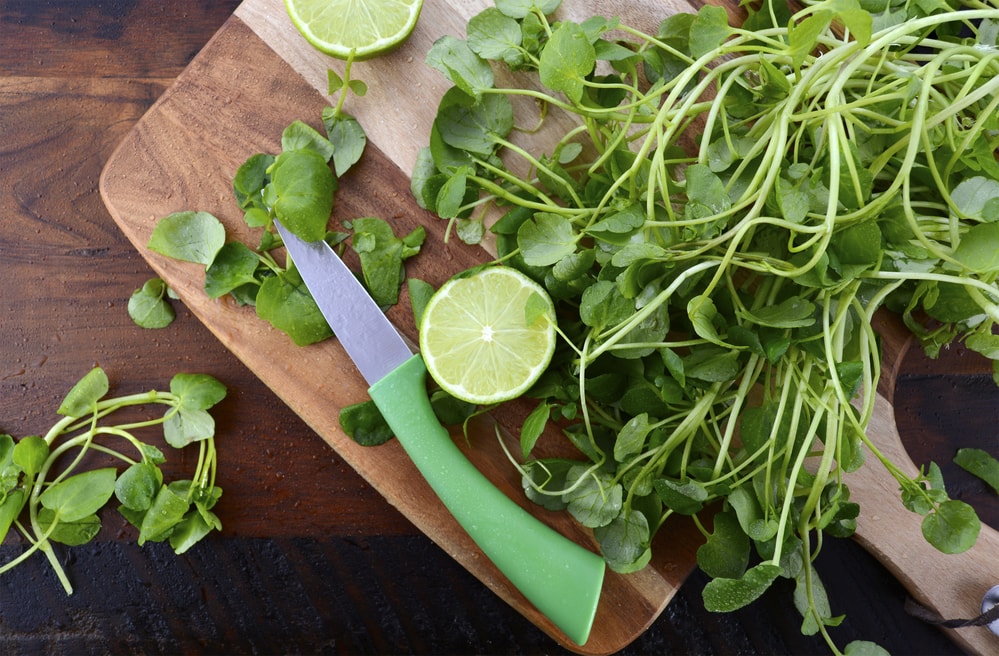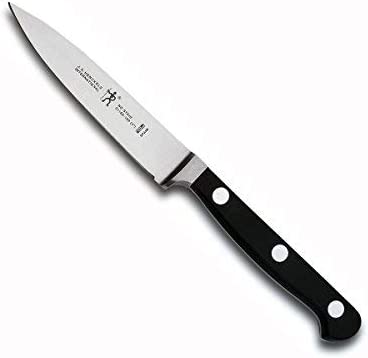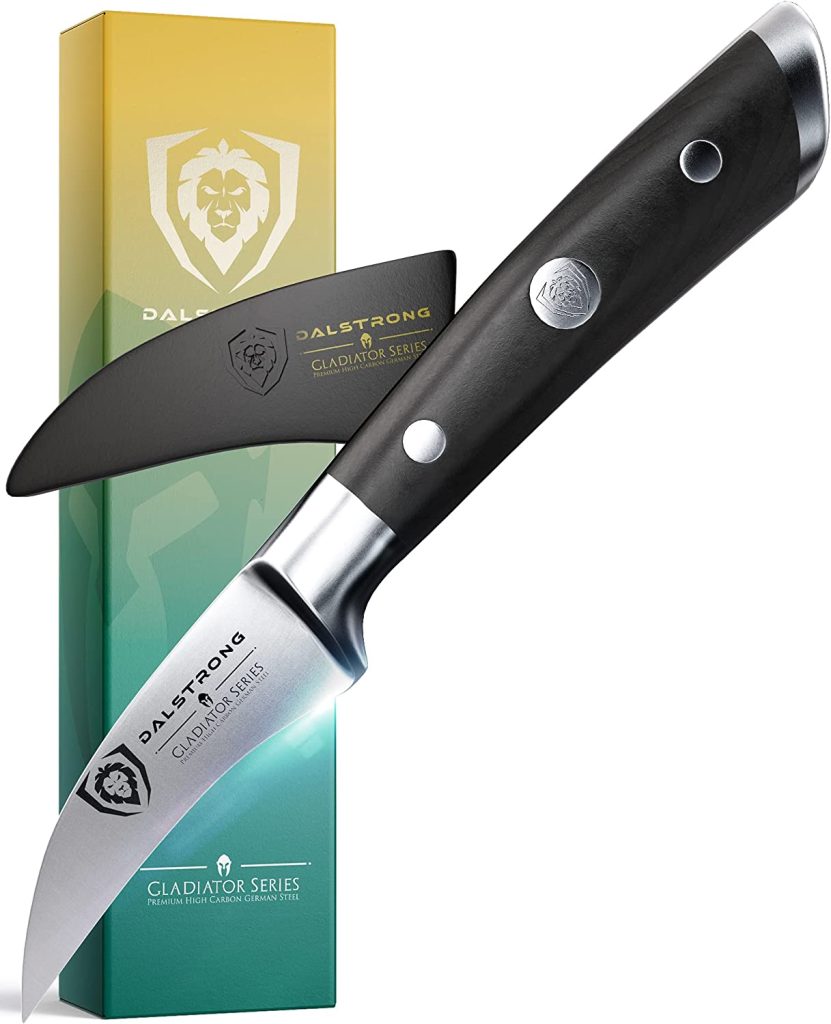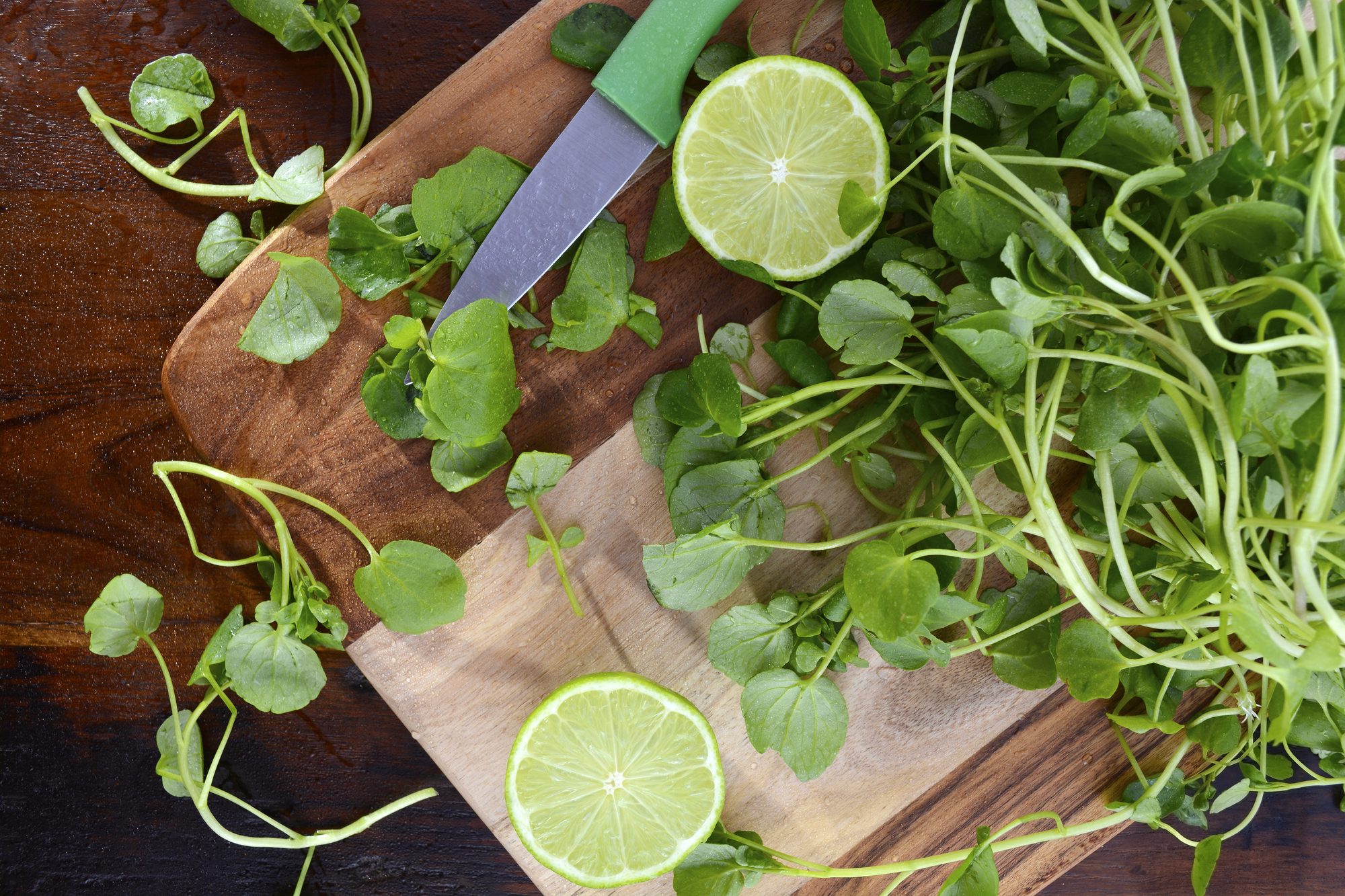There are so many various tasks involved in cooking fantastic food in your kitchen. Whether preparing a Thanksgiving dinner for your extended family or simply throwing together a quick bite in the early morning before work, without the proper tools, you risk the quality of your cuts for delicious food.
That is why we have put together this quick guide by breaking down the difference between peeling and paring knives. This way, you can find the perfect tool to create any kind of dish or resolve your various kitchen needs.
Main Differences
| Peeling Knife | Paring Knife | |
| Blade Length | 2-4” | Blade Length of 3-5” |
| Blade Edge | Curved Inward Bird Beak Blade | Straight Double Bevel Edge |
| Handle | Ergonomic, Non-Slick | Ergonomic, Non-Slick |
| Used for | Skinning Fruits & Veggies | All Ingredients to Trim & Cut |
What is a Peeling Knife?
Let’s start with the lesser-known peeling knife. Most people think of a peeler as a handle with two long lengths and space between them for peeling potatoes. That is a peeler.
A peeling knife is different. This is often called a bird’s beak knife because it has a short, rigid, and slightly curved blade with an edge on the inside of the curve instead of the outside. This is because that makes it easier to peel away the skin from round ingredients like popular fruits and vegetables.
Most peeling knives are around 2-4 inches in length and primarily work with skins, meaning it needs a relatively sharp edge for the peeling to work. That is why the handle is constructed so well, so you don’t slip and slice into your hands.

How is this Different from a Paring Knife?
A paring knife has a similar size and use, but with a straighter blade of roughly 3-4 inches. It is used for cutting away skin, trimming meats, or for precise cuts. The versatility and more straightforward blade shape are the primary differences that separate a well-made paring knife from a peeling knife.
A peeling knife is kept on hand to peel fruits and vegetables. A paring knife can do that work, as well as other necessary tasks with other food groups, from meat to desserts.
Neither blade has large bolsters or heavy materials because they are so compact. However, they are both extremely sharp, so they can do the delicate work needed. Most of the time, you’ll find these blades kept in a wooden knife block or along a magnetic metal strip in a professional kitchen.
Which is Better for You?
The simple answer here is both. You would want to have a quality paring knife on hand for a number of kitchen tasks, as well as a razor-sharp bird’s beak-styled peeling knife for getting that fresh orange perfectly cut for your kiddo’s snack.
In many cases, peeling and paring knives can refer to the same blade. You can get away with owning only one as long as it provides the sharpness and versatility you need for everyday cooking and food preparation.
What Makes a Quality Paring or Peeling Knife?
You want something that is durable, sharp, and easy to maintain. We suggest a carbon stainless steel material or something similar because it will hold the edge well and is easy to sharpen with a wet stone and hone with a steel rod.
You should also pay close attention to the handle material. Anything with ergonomic grips that reduces the risk of dropping or slipping with these knives is a good choice. The more control you have over these smaller knives, the better, as one accidental cut can absolutely lead to a couple of stitches.
Essentially the more durability, control, and balance available are how to determine what you should pick up for your kitchen.
The Best Peeling & Paring Knives
A well-made paring knife can do wonders in your kitchen. That is why we suggest the Henckels Classic Paring Knife is made from durable stainless steel. This 4-inch blade has an excellent balance and easy-to-grip handle that allows you to get the carefully detailed slices and intricate cuts you want without risking harm to your hand or wrist. Add on top of that a triple rivet design and forged blade, and you have an excellent addition to your cooking journey.

You can then complement your paring knife with the exquisite detail from the Dalstrong Tourne Peeling Kinfe. This 2.75” bird’s beak blade offers authentic forged German high carbon steel and a protective sheath to avoid any accidents. You get the quality curve along the edge for easy peeling of your favorite vegetables and fresh fruits, perfect for camping or preparing a stunning natural dessert.

Wrapping it Up
Paring and peeling knives have been used for a long time throughout history. Everyone from the French chef preparing a delicate dessert to the long-time sailor needing a citrus boost relies on well-made paring and peeling knives to enjoy their food.
Picking up a quality-made option for your kitchen will help you get the precise cuts you need. As always, go with the blade that best suits your individual needs and preferences. We at Knives Academy know how vital personal taste and style matter for knife choice. Thank you for reading, and we hope this helps inform your next knife buying decision!




Post Your Thoughts